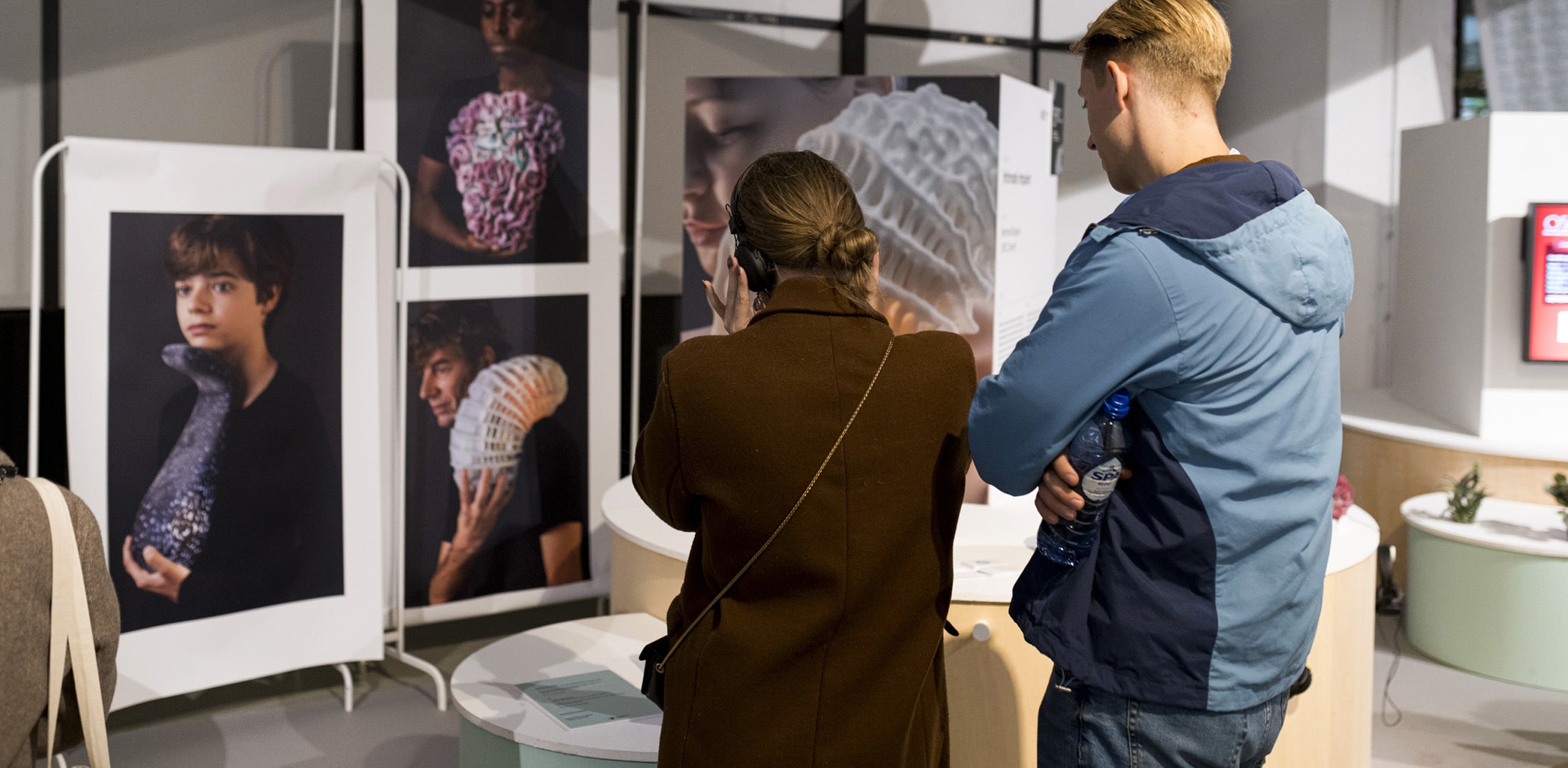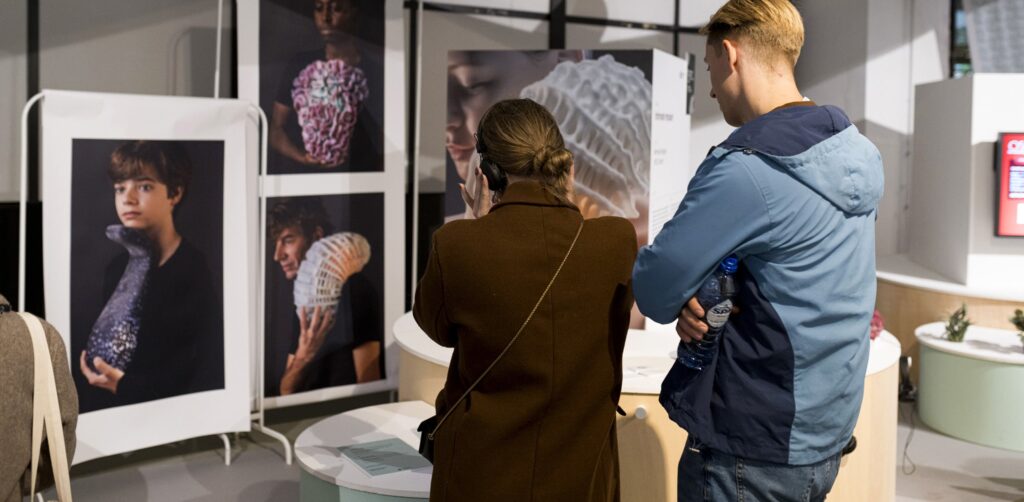
What is it like to live with a regenerative implant? How do you tailor a treatment to the patient’s wants and needs? And how do we make implants accessible to everyone who needs them?


During their PhD programs, Anne-Floor de Kanter and Manon van daal worked together to investigate the ethical aspects of regenerative medicine. They focused on regenerative implants: synthetic implants that are broken down by the body and replaced by the body’s own tissue. Anne-Floor initially focused on the ethics of regenerative heart valve implants and Manon on bone implants. Over time, their projects became intertwined. Together they investigated how people can experience life with implants and what inclusive design of those implants could look like.
‘The idea that the human body is something that we can fix, also occurs in regular medicine,’ says Anne-Floor, ‘but that idea is even more present in regenerative medicine, precisely because it opens up so many possibilities on a cellular and molecular level. That offers new prospects, such as gene and stem cell therapy. As a result, the humanity of a person can be overlooked.’
Consequently, a mismatch can arise between the needs of the patient and the goal of the practitioner, Manon explains: ‘During our focus groups, we often saw that doctors were focused primarily on solving the physical problem, such as repairing a knee or meniscus. The broader wishes and needs of the patient were not taken into account. So, sometimes, the patient’s expectations can differ from the doctor’s. Then the question is: do we only want to solve the physical defect, or do we want to improve someone’s overall well-being?’
To better tailor the goal of treatment to the patient’s needs, it is therefore important to understand how they experience treatments, such as having an implant. ‘We suspect that for some people the idea of an implant that is broken down by the body itself and converted into living tissue is a comforting idea,’ says Anne-Floor, ‘But for others this idea might be scary, because it is a technology that enters your body and becomes one with it. It is important to think about this while new therapies are being developed. That way, we can later offer those who find it scary the help they need.’
Studying the experiences of people with a regenerative implant proved difficult, as such implants are currently not widely used. In an attempt to approach these experiences, Anne-Floor and Manon spoke to people with regular implants in focus groups. ‘That quickly became a reflection on their experiences with their own implant,’ says Anne-Floor, ‘So even for people whose experiences are relatively close to having a regenerative implant, it is difficult to imagine what it would be like.’
That is why they collaborated with us to develop the art project Intimate Implant. The project consists of three objects: interactive, artistic interpretations of regenerative implants that start a conversation with the visitor about the relationship between humans and technology. Manon: ‘The art project gave people a tool to reflect on the ethical aspects of regenerative implants and to get an idea of what it is like to have a regenerative implant. It takes time for people to familiarize themselves with that idea, so it would be preferred not to wait with that until the treatments are available.’
Another topic that should be considered early on in the development of new therapies, is inclusion, Manon explains: ‘In the past, research was often done with, on and by men, which meant that the medicines and implants that became available turned out not to work for everyone.’ Anne-Floor adds: ‘Ultimately, you want a treatment to be suitable for everyone who needs it, not just for white men. In that case, the treatment may not work as well as you had hoped. So it will also save you a lot of time and money to think about this early on. Although it remains a balance between taking diversity into account, and doing what is feasible.’
Anne-Floor and Manon both worked in research groups full of engineers and clinicians. ‘My consortium does fundamental research, so they are far removed from the application, and especially the user,’ says Anne-Floor, ‘But ethics are always involved in the development of new therapies, at every stage.’ This ethical side is now being recognized more, says Manon: ‘Themes like inclusion were not thought of until the clinical trials. These days, it is being discussed earlier on in the process, in part due to our presence as ethicists in the research groups.’
‘The most important thing is to have thought about it,’ Anne-Floor emphasizes, ‘to become aware of and consider your blind spots as a researcher. That allows you to recognize limitations in your research and to make differences choices, to eventually make the results more inclusive and valuable.’
This article was previously published on University Utrecht. For use on this website, the text has been slightly modified.
Photo: Max Kneefel
During their PhD programs, Anne-Floor de Kanter and Manon van daal worked together to investigate the ethical aspects of regenerative medicine. They focused on regenerative implants: synthetic implants that are broken down by the body and replaced by the body’s own tissue. Anne-Floor initially focused on the ethics of regenerative heart valve implants and Manon on bone implants. Over time, their projects became intertwined. Together they investigated how people can experience life with implants and what inclusive design of those implants could look like.
‘The idea that the human body is something that we can fix, also occurs in regular medicine,’ says Anne-Floor, ‘but that idea is even more present in regenerative medicine, precisely because it opens up so many possibilities on a cellular and molecular level. That offers new prospects, such as gene and stem cell therapy. As a result, the humanity of a person can be overlooked.’
Consequently, a mismatch can arise between the needs of the patient and the goal of the practitioner, Manon explains: ‘During our focus groups, we often saw that doctors were focused primarily on solving the physical problem, such as repairing a knee or meniscus. The broader wishes and needs of the patient were not taken into account. So, sometimes, the patient’s expectations can differ from the doctor’s. Then the question is: do we only want to solve the physical defect, or do we want to improve someone’s overall well-being?’
To better tailor the goal of treatment to the patient’s needs, it is therefore important to understand how they experience treatments, such as having an implant. ‘We suspect that for some people the idea of an implant that is broken down by the body itself and converted into living tissue is a comforting idea,’ says Anne-Floor, ‘But for others this idea might be scary, because it is a technology that enters your body and becomes one with it. It is important to think about this while new therapies are being developed. That way, we can later offer those who find it scary the help they need.’
Studying the experiences of people with a regenerative implant proved difficult, as such implants are currently not widely used. In an attempt to approach these experiences, Anne-Floor and Manon spoke to people with regular implants in focus groups. ‘That quickly became a reflection on their experiences with their own implant,’ says Anne-Floor, ‘So even for people whose experiences are relatively close to having a regenerative implant, it is difficult to imagine what it would be like.’
That is why they collaborated with us to develop the art project Intimate Implant. The project consists of three objects: interactive, artistic interpretations of regenerative implants that start a conversation with the visitor about the relationship between humans and technology. Manon: ‘The art project gave people a tool to reflect on the ethical aspects of regenerative implants and to get an idea of what it is like to have a regenerative implant. It takes time for people to familiarize themselves with that idea, so it would be preferred not to wait with that until the treatments are available.’
Another topic that should be considered early on in the development of new therapies, is inclusion, Manon explains: ‘In the past, research was often done with, on and by men, which meant that the medicines and implants that became available turned out not to work for everyone.’ Anne-Floor adds: ‘Ultimately, you want a treatment to be suitable for everyone who needs it, not just for white men. In that case, the treatment may not work as well as you had hoped. So it will also save you a lot of time and money to think about this early on. Although it remains a balance between taking diversity into account, and doing what is feasible.’
Anne-Floor and Manon both worked in research groups full of engineers and clinicians. ‘My consortium does fundamental research, so they are far removed from the application, and especially the user,’ says Anne-Floor, ‘But ethics are always involved in the development of new therapies, at every stage.’ This ethical side is now being recognized more, says Manon: ‘Themes like inclusion were not thought of until the clinical trials. These days, it is being discussed earlier on in the process, in part due to our presence as ethicists in the research groups.’
‘The most important thing is to have thought about it,’ Anne-Floor emphasizes, ‘to become aware of and consider your blind spots as a researcher. That allows you to recognize limitations in your research and to make differences choices, to eventually make the results more inclusive and valuable.’
This article was previously published on University Utrecht. For use on this website, the text has been slightly modified.
Photo: Max Kneefel
Symbiose is a speculative design
and research studio. We collaborate
with experts across disciplines to
develop new perspectives, engaging
experiences and innovative solutions.
© 2024 Symbiose All Rights Reserved.
© 2024 Symbiose All Rights Reserved.